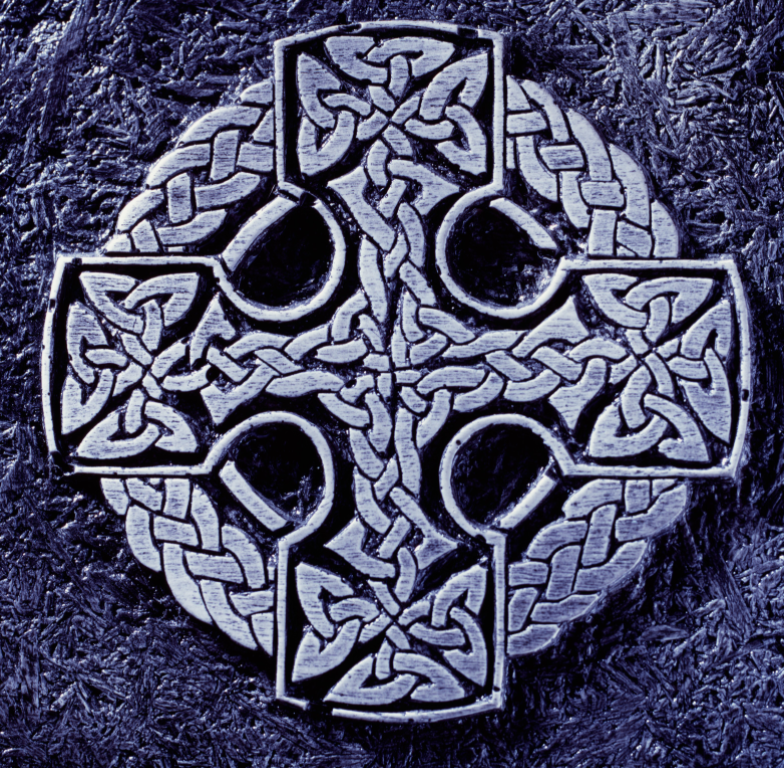Re-seeing and re-valuing the Christian Cross

I have two Celtic crosses in my bedroom.
One is on the cover of my bedspread. It’s a valued possession with scroll-work surely inspired by the Book of Kells. I purchased it on the island of Iona.
The other is a stained glass cross fixed to my window. It has midnight blue arms, a green circle and a gold centre that catches the morning sun. Apart from their shape, these two Celtic crosses have nothing in common.
You can read what you want into symbols and icons. To me, the Christian cross is a symbol of imbalance. The four arms meet in the middle of the Celtic cross, the round green heartland. It speaks of wholeness, as in the mandala. The lower arm is the problem. It’s longer than the other three arms. I take, happily, the oppositional – North, South, West and East – brought together at the point of integration in an ordinary cross, at the centre. With the Christian cross, I have to transform the lower arm from its present tendency to champion the Anthropocene in the matter of the Earth as greed, consumerism. Instead, re-root it to the evolutionary necessity to focus on care for the planet.
It is interesting how this transformation makes sense to me with my beliefs and values. The Christian cross morphs into a dynamic imperative to work on our human relationship with the Earth if we want our species to survive. One day reach the point where the oppositional are all of equal length, in balance, like the rays of the star-symbol.
I thought I knew why the Celtic cross appealed to me so much. Now I have discovered, this morning, another way to interpret it.
My reference points are many. Native American 4 directions (in the working out it is 7 directions of course, far more powerful as a 3D rather than 2D model), Tai Chi in the Earth-Sky energy flow, Yogic in the borrow from the chakras – root to crown of head.
I feel, when multi-reference points are operating in interpretation, it is much easier to achieve inner coherence through integration. The over-long arm of the Christian cross points, today, to our need to get more real when it comes to the Earth and nature. The urgency to do this.
For this perception to take hold, it is necessary, for a moment, to set aside the traditional interpretation of the Christian cross. To do this makes the Christian cross more relevant as a symbol in many belief systems, and gives it greater relevance for us today.
If we are willing to work at the level of the great underlying symbols – imagery – rather than the dense texts of intellectualisation, we can reach a different place of understanding quite quickly.
Imagery carries the power it always has for the human being. That’s why Protestants were so keen to eradicate all traces of it from the Catholic religion in the sixteenth century. The human brain processes imagery in the right hemisphere, language in the left hemisphere. This crucial difference is a brain-sourced phenomena, whose profound effect can be brought to bear on our global ecological crisis.
The Christian cross, taken as a modern working symbol, can also find a new role, a complementary one to its original deep association with the crucifixion. One that speaks a common language in cross-religious or interfaith contexts. It demonstrates the inherent power of imagery to widen the fields of reference with the single intention of highlighting commonalities that will bring us to a wholeness of seeing.
It is done through using associative thinking rather than boxed or linear thinking.
Art, generally, plays too small a part in our culture, is seen as a peripheral to serious issues. Perhaps art’s role in culture is due a makeover?
Writing and Imagery by A.J. Palmer. Published by Aber.
